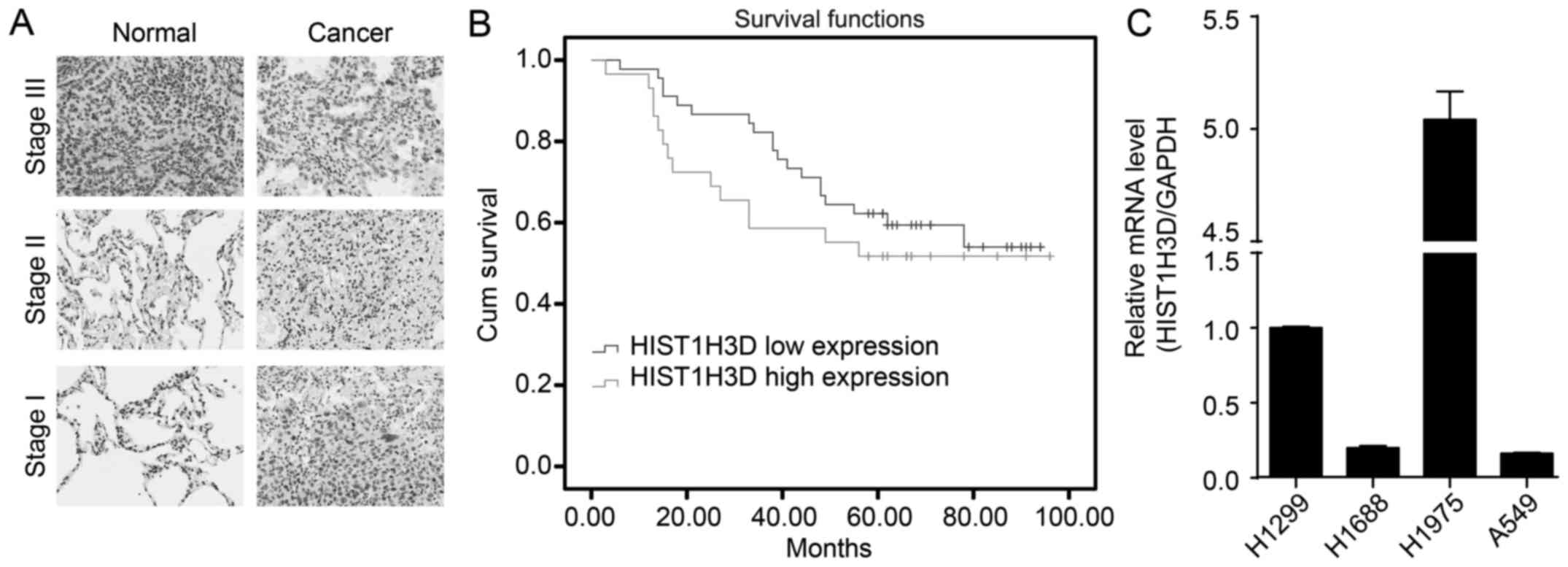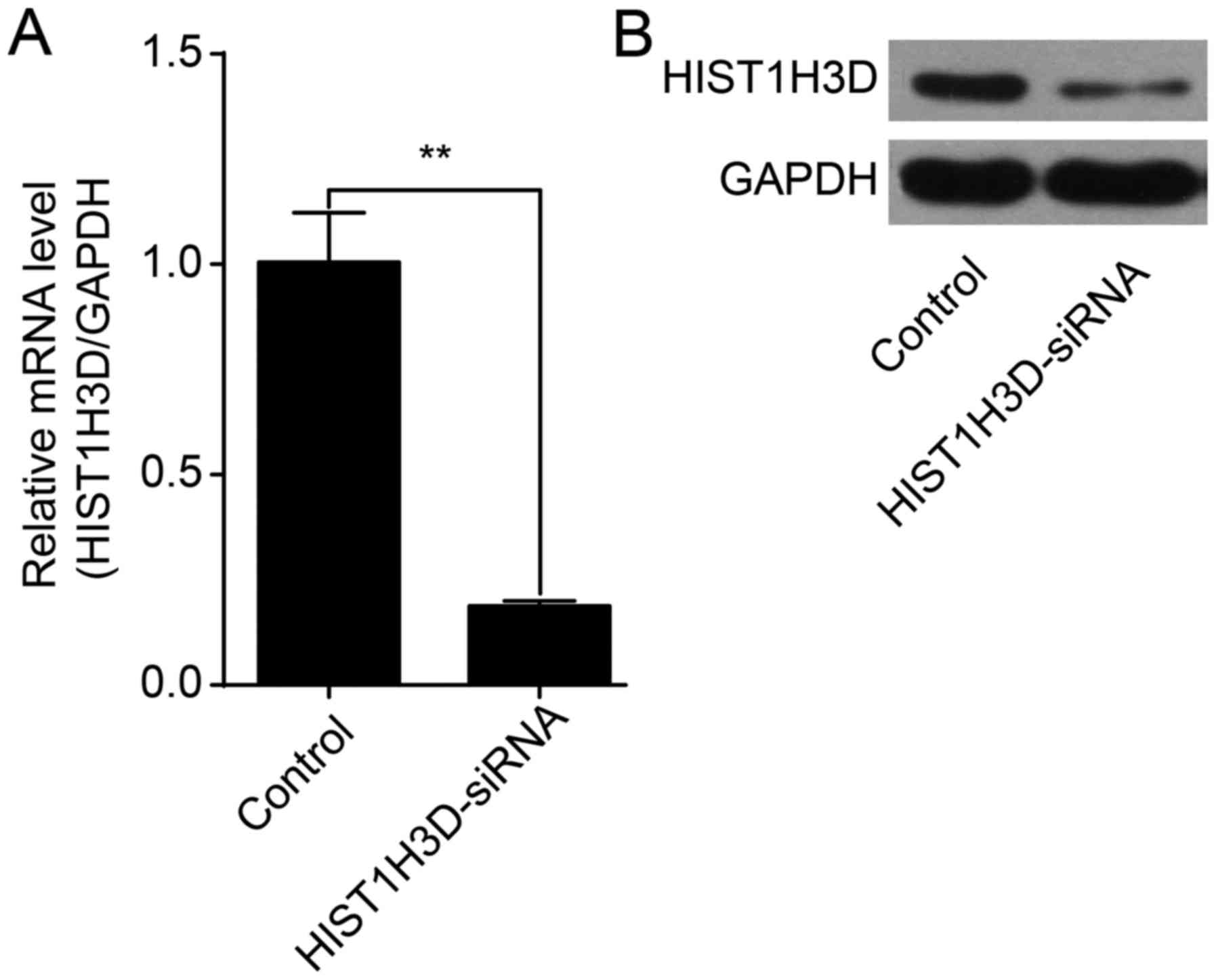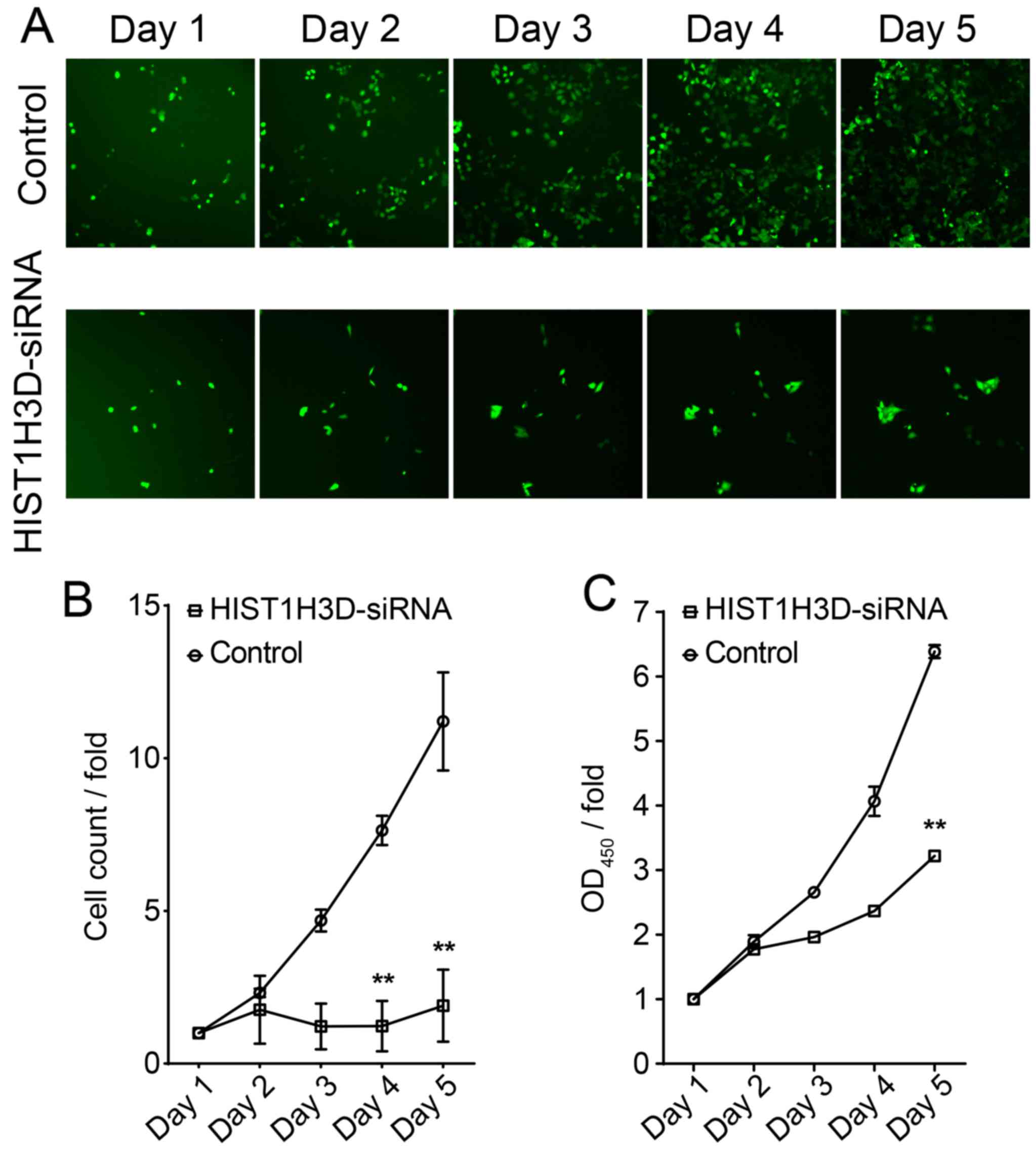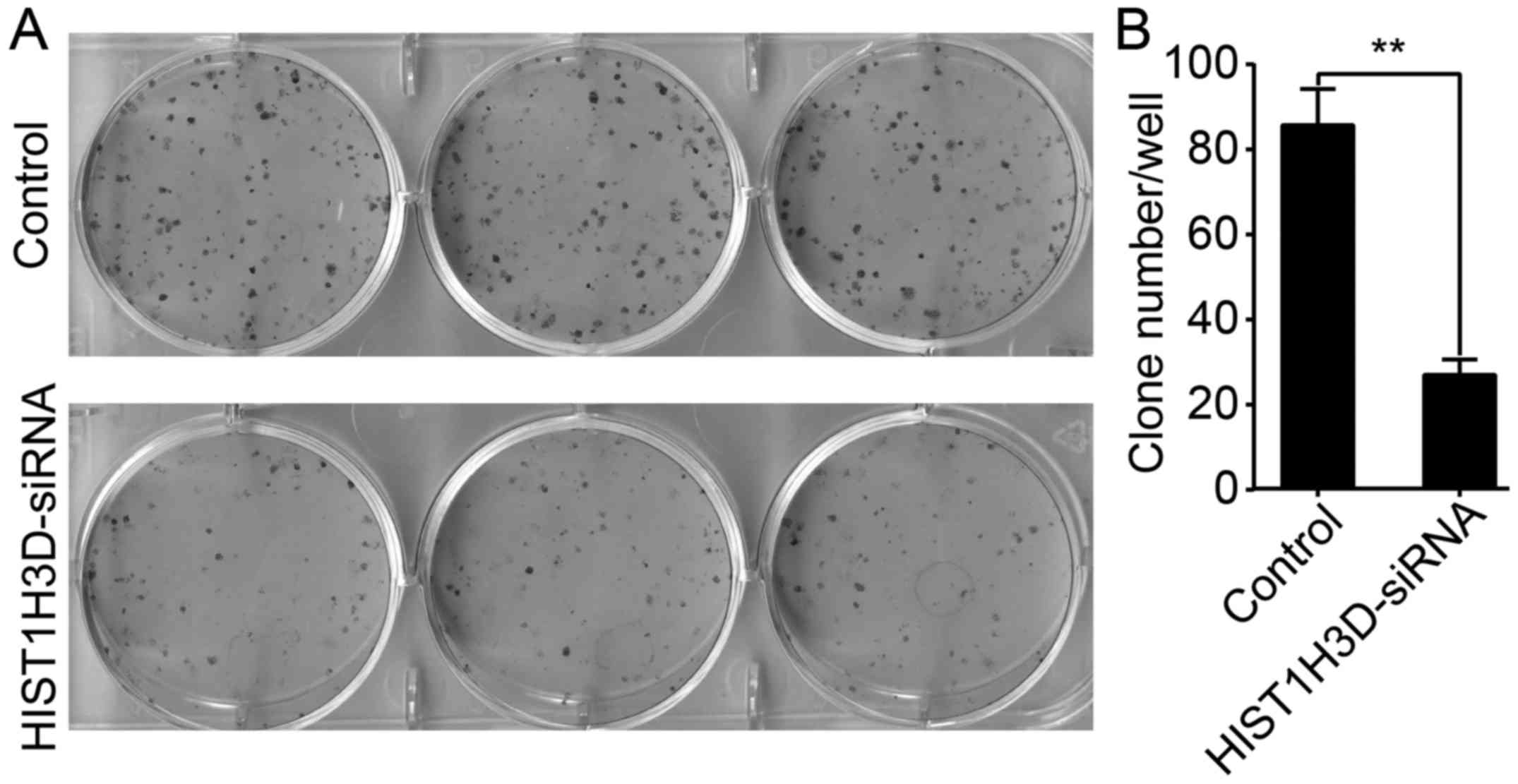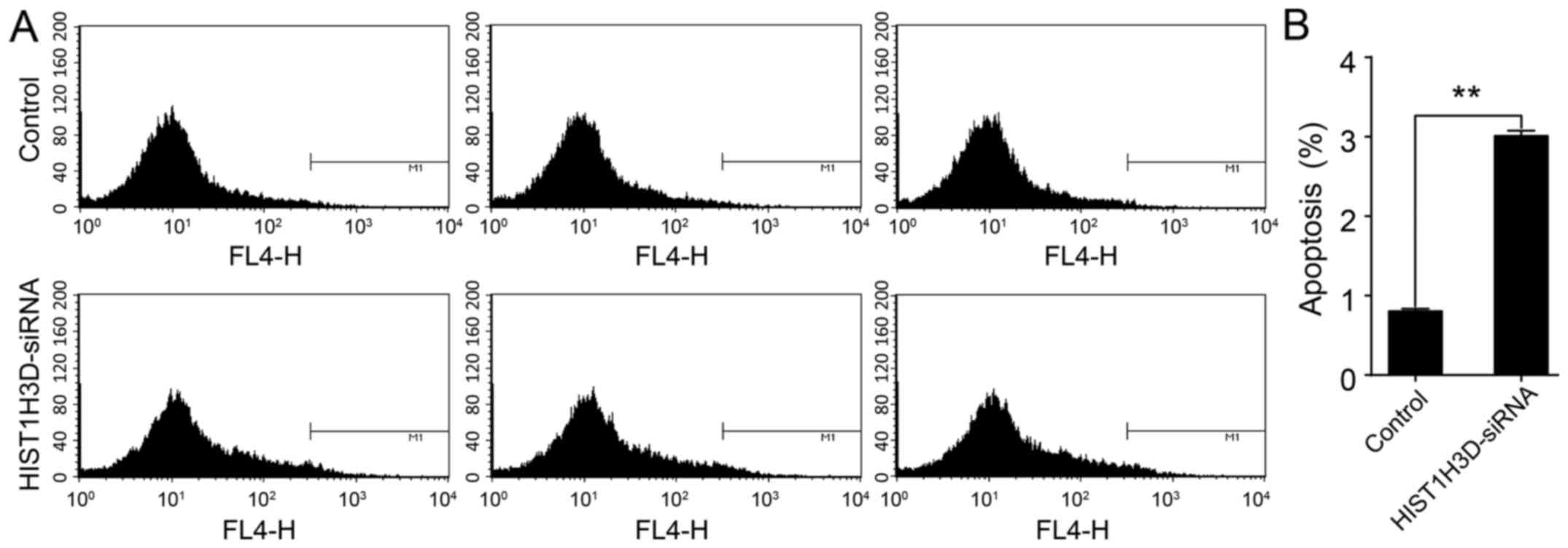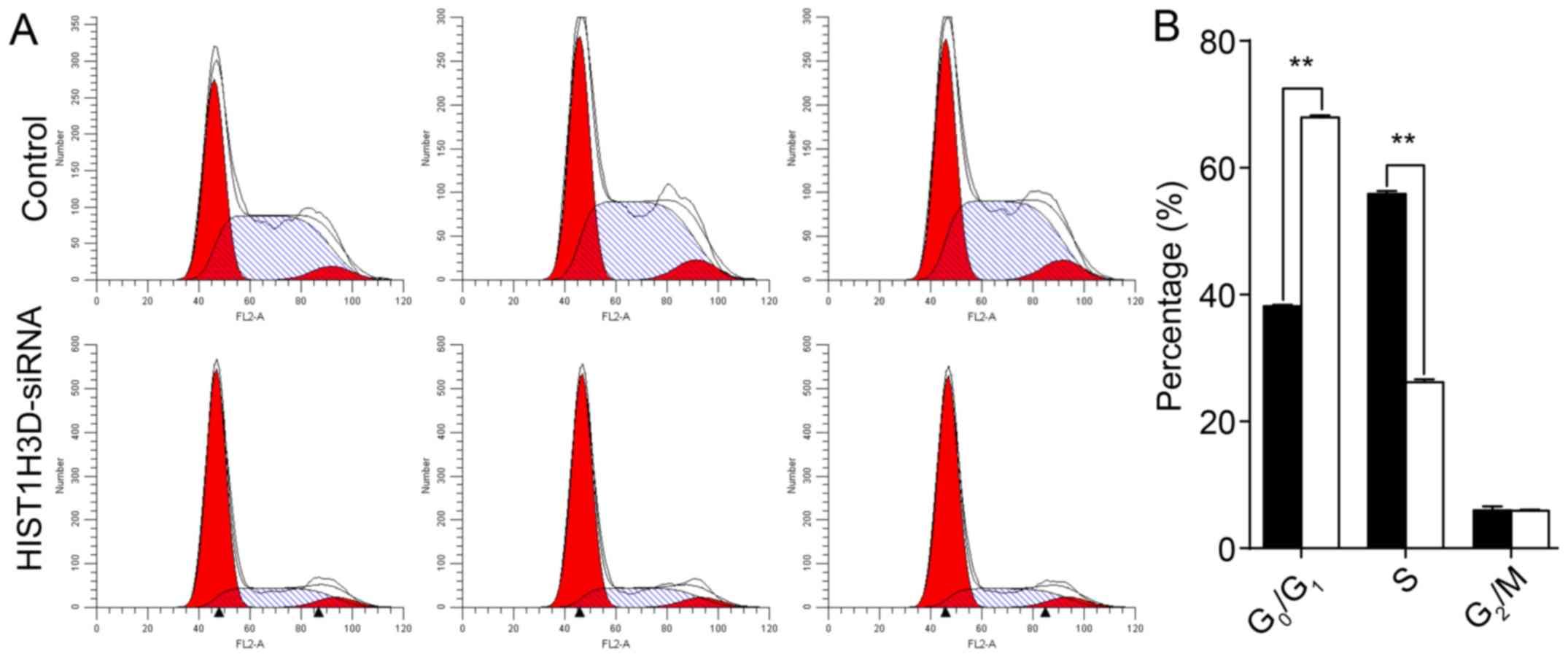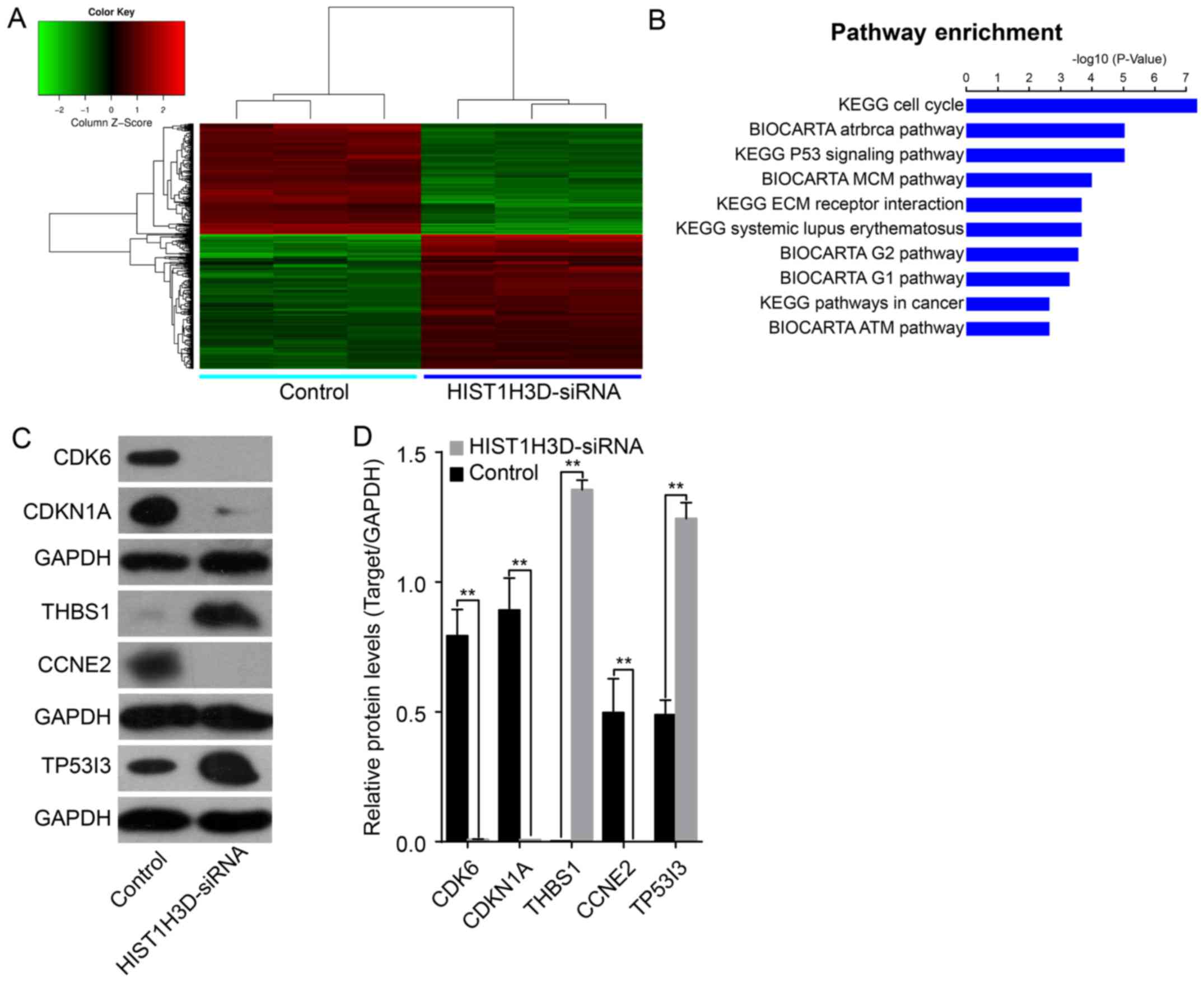|
1
|
Torre LA, Bray F, Siegel RL, Ferlay J,
Lortet-Tieulent J and Jemal A: Global cancer statistics, 2012. CA
Cancer J Clin. 65:87–108. 2015. View Article : Google Scholar : PubMed/NCBI
|
|
2
|
Chen W, Li Z, Bai L and Lin Y: NF-kappaB
in lung cancer, a carcinogenesis mediator and a prevention and
therapy target. Front Biosci (Landmark Ed). 16:1172–1185. 2011.
View Article : Google Scholar
|
|
3
|
Vischioni B, Oudejans JJ, Vos W, Rodriguez
JA and Giaccone G: Frequent overexpression of aurora B kinase, a
novel drug target, in non-small cell lung carcinoma patients. Mol
Cancer Ther. 5:2905–2913. 2006. View Article : Google Scholar : PubMed/NCBI
|
|
4
|
Birnstiel ML, Busslinger M and Strub K:
Transcription termination and 3′ processing: The end is in site!
Cell. 41:349–359. 1985. View Article : Google Scholar : PubMed/NCBI
|
|
5
|
Liu TJ, Levine BJ, Skoultchi AI and
Marzluff WF: The efficiency of 3′-end formation contributes to the
relative levels of different histone mRNAs. Mol Cell Biol.
9:3499–3508. 1989. View Article : Google Scholar : PubMed/NCBI
|
|
6
|
Osley MA: The regulation of histone
synthesis in the cell cycle. Annu Rev Biochem. 60:827–861. 1991.
View Article : Google Scholar : PubMed/NCBI
|
|
7
|
Zanier K, Luyten I, Crombie C, Muller B,
Schümperli D, Linge JP, Nilges M and Sattler M: Structure of the
histone mRNA hairpin required for cell cycle regulation of histone
gene expression. RNA. 8:29–46. 2002. View Article : Google Scholar : PubMed/NCBI
|
|
8
|
Meshi T, Taoka KI and Iwabuchi M:
Regulation of histone gene expression during the cell cycle. Plant
Mol Biol. 43:643–657. 2000. View Article : Google Scholar : PubMed/NCBI
|
|
9
|
Schümperli D: Cell-cycle regulation of
histone gene expression. Cell. 45:471–472. 1986. View Article : Google Scholar : PubMed/NCBI
|
|
10
|
Turner BM: Cellular memory and the histone
code. Cell. 111:285–291. 2002. View Article : Google Scholar : PubMed/NCBI
|
|
11
|
Berger SL: Histone modifications in
transcriptional regulation. Curr Opin Genet Dev. 12:142–148. 2002.
View Article : Google Scholar : PubMed/NCBI
|
|
12
|
Jenuwein T and Allis CD: Translating the
histone code. Science. 293:1074–1080. 2001. View Article : Google Scholar : PubMed/NCBI
|
|
13
|
Cruft HJ, Mauritzen CM and Stedman E:
Abnormal properties of histones from malignant cells. Nature.
174:580–585. 1954. View
Article : Google Scholar : PubMed/NCBI
|
|
14
|
Rheinbay E, Louis DN, Bernstein BE and
Suvà ML: A tell-tail sign of chromatin: Histone mutations drive
pediatric glioblastoma. Cancer Cell. 21:329–331. 2012. View Article : Google Scholar : PubMed/NCBI
|
|
15
|
Dryhurst D and Ausió J: Histone H2A.Z
deregulation in prostate cancer. Cause or effect? Cancer Metastasis
Rev. 33:429–439. 2014. View Article : Google Scholar : PubMed/NCBI
|
|
16
|
Albig W, Kioschis P, Poustka A, Meergans K
and Doenecke D: Human histone gene organization: Nonregular
arrangement within a large cluster. Genomics. 40:314–322. 1997.
View Article : Google Scholar : PubMed/NCBI
|
|
17
|
Peters AH and Schübeler D: Methylation of
histones: Playing memory with DNA. Curr Opin Cell Biol. 17:230–238.
2005. View Article : Google Scholar : PubMed/NCBI
|
|
18
|
Iwaya T, Fukagawa T, Suzuki Y, Takahashi
Y, Sawada G, Ishibashi M, Kurashige J, Sudo T, Tanaka F, Shibata K,
et al: Contrasting expression patterns of histone mRNA and microRNA
760 in patients with gastric cancer. Clin Cancer Res. 19:6438–6449.
2013. View Article : Google Scholar : PubMed/NCBI
|
|
19
|
Wang B, Tang J, Liao D, Wang G, Zhang M,
Sang Y, Cao J, Wu Y, Zhang R, Li S, et al: Chromobox homolog 4 is
correlated with prognosis and tumor cell growth in hepatocellular
carcinoma. Ann Surg Oncol. 20(Suppl 3): S684–S692. 2013. View Article : Google Scholar : PubMed/NCBI
|
|
20
|
Esteller M: Cancer epigenomics: DNA
methylomes and histone-modification maps. Nat Rev Genet. 8:286–298.
2007. View
Article : Google Scholar : PubMed/NCBI
|
|
21
|
Berdasco M and Esteller M: Aberrant
epigenetic landscape in cancer: How cellular identity goes awry.
Dev Cell. 19:698–711. 2010. View Article : Google Scholar : PubMed/NCBI
|
|
22
|
Turner G and Hancock RL: Histone methylase
activity of adult, embryonic and neoplastic liver tissues. Life Sci
II. 9:917–922. 1970. View Article : Google Scholar : PubMed/NCBI
|
|
23
|
Ballestar E and Esteller M: The epigenetic
breakdown of cancer cells: From DNA methylation to histone
modifications. Prog Mol Subcell Biol. 38:169–181. 2005. View Article : Google Scholar : PubMed/NCBI
|
|
24
|
Sakamoto R, Nitta T, Kamikawa Y, Sugihara
K, Hasui K, Tsuyama S and Murata F: The assessment of cell
proliferation during 9,10-dimethyl-1,2-benzanthracene-induced
hamster tongue carcinogenesis by means of histone H3 mRNA in situ
hybridization. Med Electron Microsc. 37:52–61. 2004. View Article : Google Scholar : PubMed/NCBI
|
|
25
|
Piscopo M, Campisi G, Colella G,
Bilancione M, Caccamo S, Di Liberto C, Tartaro GP, Giovannelli L,
Pulcrano G and Fucci L: H3 and H3.3 histone mRNA amounts and ratio
in oral squamous cell carcinoma and leukoplakia. Oral Dis.
12:130–136. 2006. View Article : Google Scholar : PubMed/NCBI
|
|
26
|
Sadikovic B, Yoshimoto M, Chilton-MacNeill
S, Thorner P, Squire JA and Zielenska M: Identification of
interactive networks of gene expression associated with
osteosarcoma oncogenesis by integrated molecular profiling. Hum Mol
Genet. 18:1962–1975. 2009. View Article : Google Scholar : PubMed/NCBI
|
|
27
|
Pérez-Magán E, Rodríguez de Lope A,
Ribalta T, Ruano Y, Campos-Martín Y, Pérez-Bautista G, García JF,
García-Claver A, Fiaño C, Hernández-Moneo JL, et al: Differential
expression profiling analyses identifies downregulation of 1p, 6q,
and 14q genes and overexpression of 6p histone cluster 1 genes as
markers of recurrence in meningiomas. Neuro Oncol. 12:1278–1290.
2010.PubMed/NCBI
|
|
28
|
Sen GL and Blau HM: A brief history of
RNAi: The silence of the genes. FASEB J. 20:1293–1299. 2006.
View Article : Google Scholar : PubMed/NCBI
|
|
29
|
Kong Q: RNAi: A novel strategy for the
treatment of prion diseases. J Clin Invest. 116:3101–3103. 2006.
View Article : Google Scholar : PubMed/NCBI
|
|
30
|
Wu Z, Li G, Wu L, Weng D, Li X and Yao K:
Cripto-1 overexpression is involved in the tumorigenesis of
nasopharyngeal carcinoma. BMC Cancer. 9:3152009. View Article : Google Scholar : PubMed/NCBI
|
|
31
|
Sumimoto H, Hirata K, Yamagata S, Miyoshi
H, Miyagishi M, Taira K and Kawakami Y: Effective inhibition of
cell growth and invasion of melanoma by combined suppression of
BRAF (V599E) and Skp2 with lentiviral RNAi. Int J Cancer.
118:472–476. 2006. View Article : Google Scholar
|
|
32
|
Vousden KH and Prives C: Blinded by the
light: The growing complexity of p53. Cell. 137:413–431. 2009.
View Article : Google Scholar : PubMed/NCBI
|
|
33
|
Levine AJ and Oren M: The first 30 years
of p53: Growing ever more complex. Nat Rev Cancer. 9:749–758. 2009.
View Article : Google Scholar : PubMed/NCBI
|



